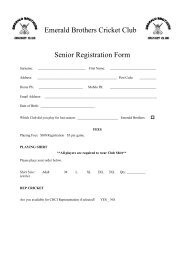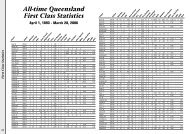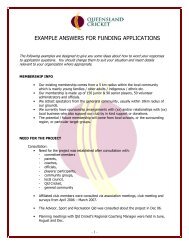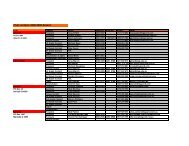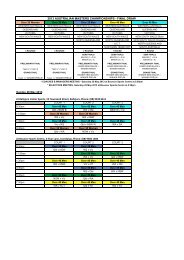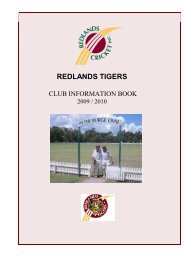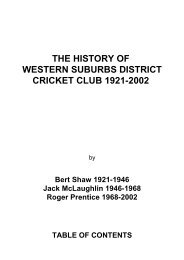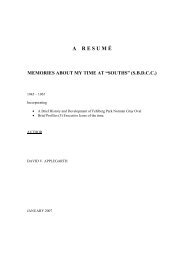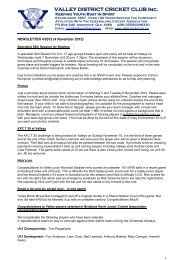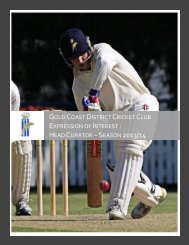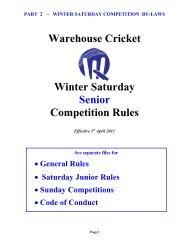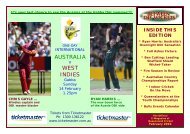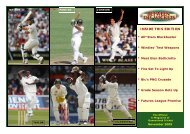QCSA Handbook on scoring 2010 - Queensland Cricket
QCSA Handbook on scoring 2010 - Queensland Cricket
QCSA Handbook on scoring 2010 - Queensland Cricket
- No tags were found...
Create successful ePaper yourself
Turn your PDF publications into a flip-book with our unique Google optimized e-Paper software.
• Keep track of all individual details <strong>on</strong> your running sheet as pernormal, but transfer minimal detail to the scorebook as wicketsactually fall. The catcher/fielder, bowler and batter’s runs should berecorded, but the batter’s balls faced and boundaries can becompleted later.• Keep track of all partnership details <strong>on</strong> your running sheet as pernormal, but again transfer minimal detail to the scorebook as wicketsactually fall. Pencil in the out and not out batters numbers, then goback and fill the names in later. The time the batter was out and theteam total at the fall of wicket should be recorded in the scorebookstraight away, but again you can go back and complete the rest later.• Although in a standard limited overs match you might complete abowler’s summary at the end of that bowler’s allocated overs, thistoo can wait until the end of the innings.• At the end of the innings, perform your main balancing functi<strong>on</strong>s.Total the top half of your scorebook, and complete the bowlers’figures — overs, maidens (usually n<strong>on</strong>e), runs, wickets and sundries.Make sure the batting and bowling balance, and you agree with yourpartner.• At the end of the match, go back and complete all the details thatweren’t required for balancing — batters, partnerships andmilest<strong>on</strong>es. Remember the game <strong>on</strong>ly goes for 2½ hours. Stayingback 30 minutes after the match to complete the scorebook is stillless time than a <strong>on</strong>e-day innings, let al<strong>on</strong>e a full match.Handy hintIf you make a mistake during a Twenty20 match and need to go backand correct, make sure you let your fellow scorer know, so that <strong>on</strong>e ofyou is still aware of what is going <strong>on</strong> out <strong>on</strong> the field. If your head isdown, it is easy to miss a ball in Twenty20 cricket.Wag<strong>on</strong> wheelsSo you’ve mastered the running sheet, are a whiz at balancing, andTwenty20 games d<strong>on</strong>’t faze you <strong>on</strong>e bit! Looking for a new challenge?70Some cricketers love batting charts, also known as wag<strong>on</strong> wheels. These arethe graphics you often see <strong>on</strong> TV, which show where a batter has scoredruns around the ground. Without committing yourself, you can make<strong>Queensland</strong> <strong>Cricket</strong> Scorers Associati<strong>on</strong>



